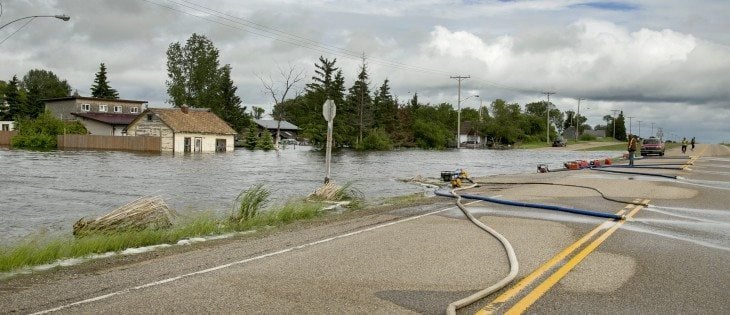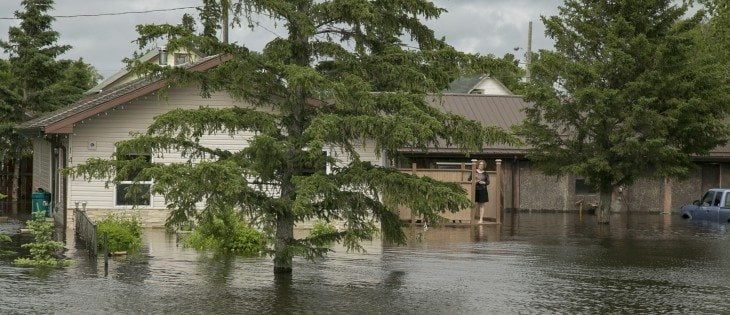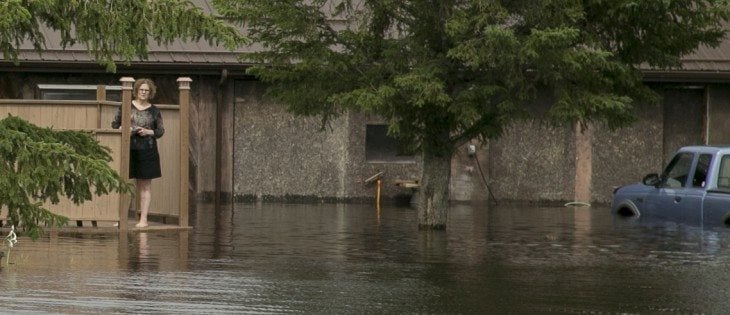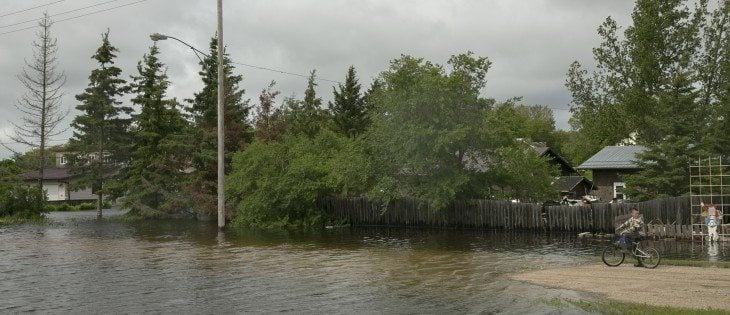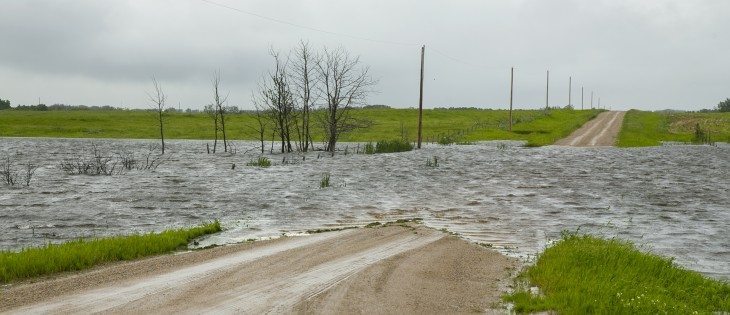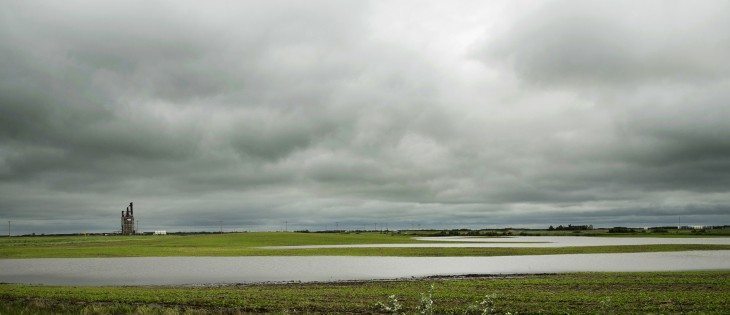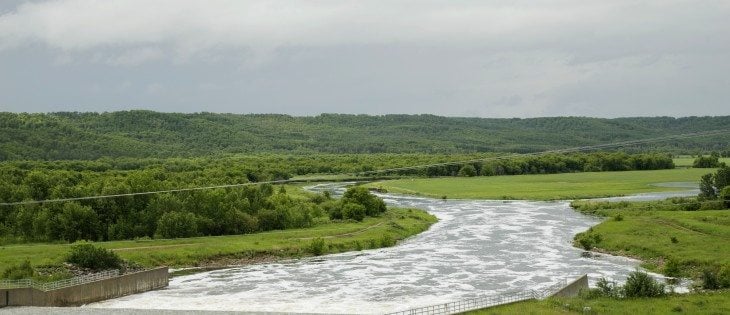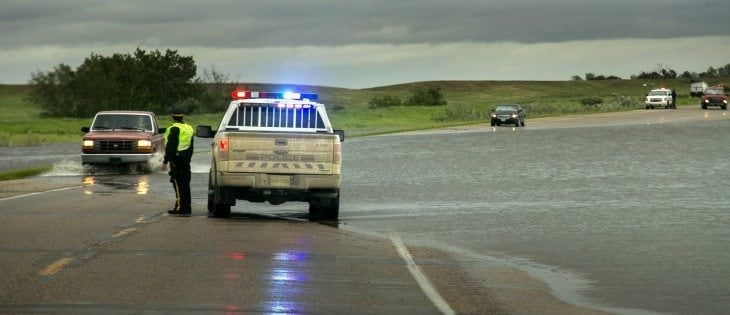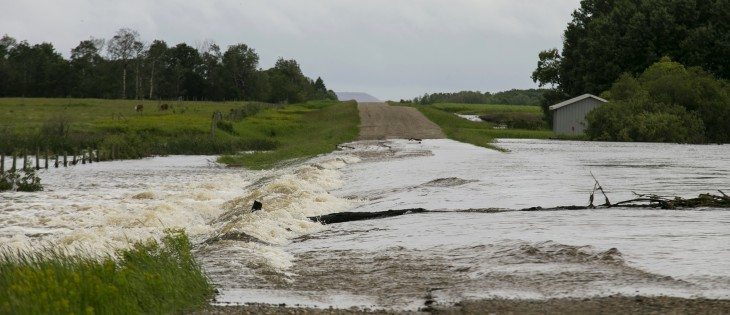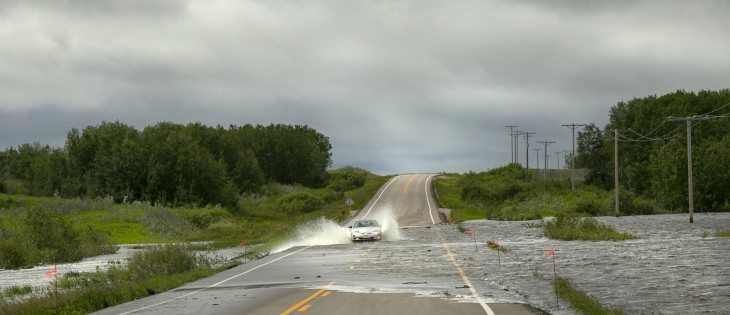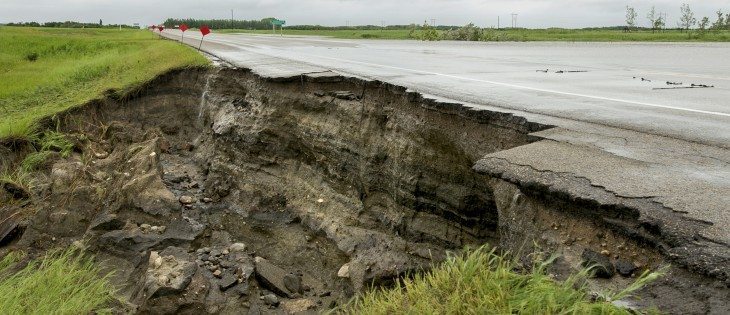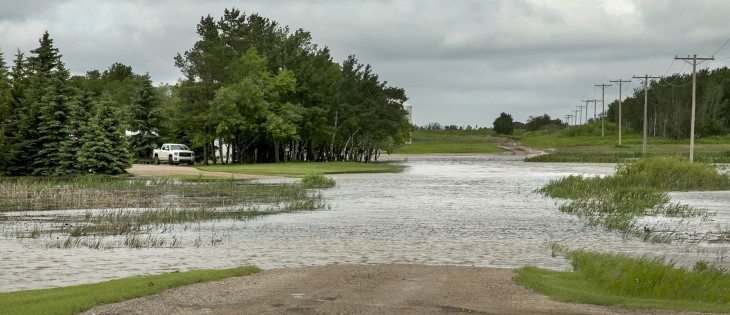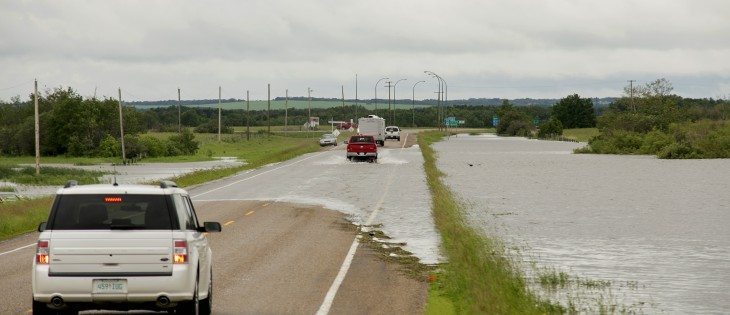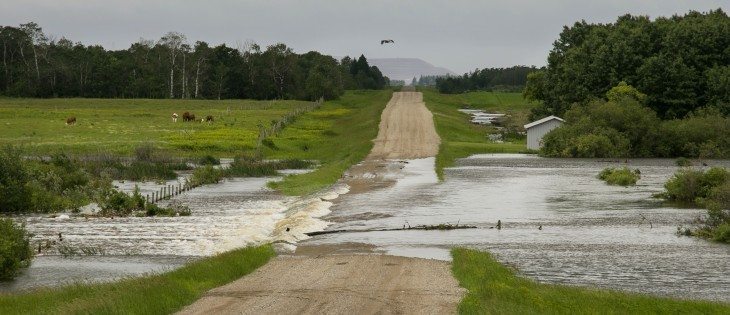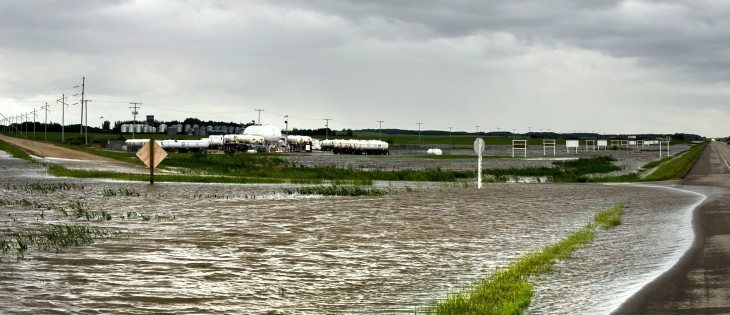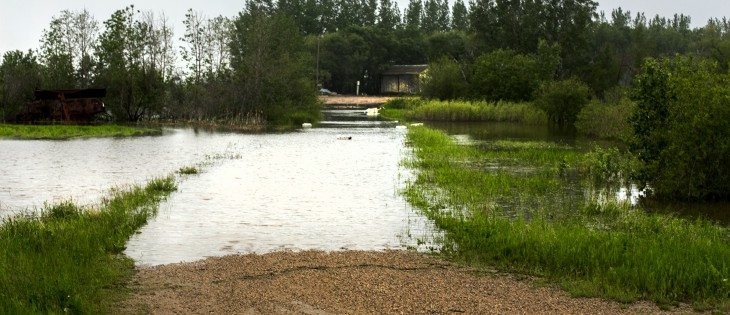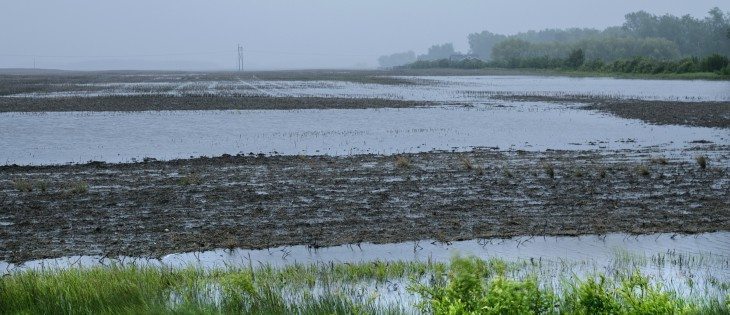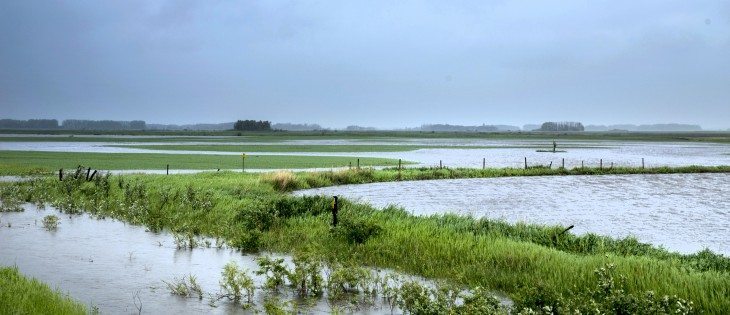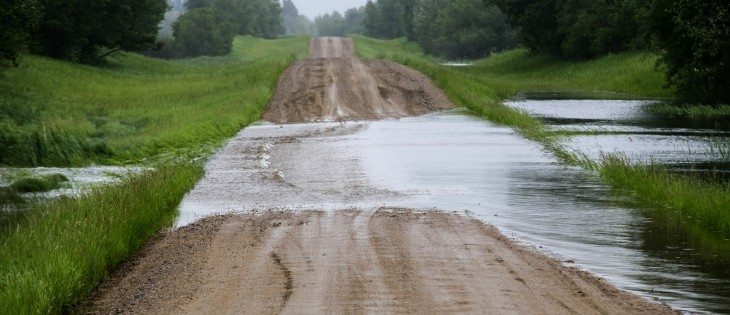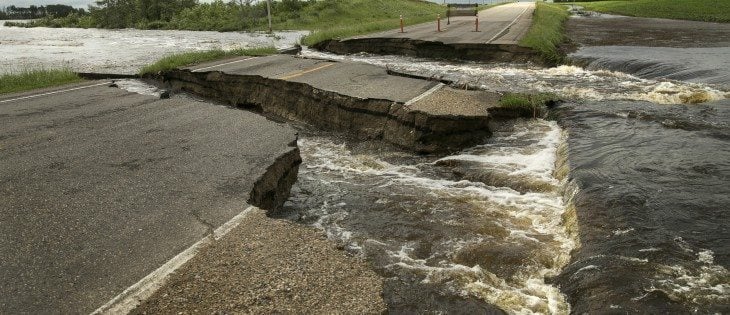
Sixty-seven municipalities in Saskatchewan and Manitoba declared states of emergency after a deluge of rain over the weekend and on Monday.
Rainfall amounts of up to 200 millimetres, and in some cases 240 mm, were reported throughout southeast Saskatchewan and southwestern Manitoba, flooding fields, stranding farmers and their livestock, and closing highways.
The Saskatchewan communities of Redvers, Gainsborough and Carievale were completely cut off, according to provincial emergency officials and RCMP.
Deanna Wysoskey, the province’s coordinator of emergency social services, said about 250 people had left Gainsborough and were staying with friends and family in Carnduff. Four people stayed behind and officials had been in contact with them in case they did have to leave.
Read Also

Agritechnica Day 3: Hybrid drive for a combine, data standards keep up to tech change and tractors of the year
Agritechnica 2025 Day 3: Hybrid drive for a combine, data standards keep up to tech change and tractors of the year.
In Yorkton, 66 residents of lower level apartment buildings also had to leave their homes.
Saskatchewan’s emergency management commissioner Duane McKay said officials can’t force people to evacuate.
“If they don’t have three days of food, water and medical supplies then we’re asking them to leave,” he said. “In most cases people are complying.”
The cities of Yorkton, Melville and Brandon, Man. were among the municipalities to declare emergencies Sunday. Brandon’s airport was closed Sunday until Monday morning.
McKay said the other 34 municipalities to declare as of Monday morning were: the towns of Whitewood, Redvers, Fleming, Wolseley, Bredenbury, Watson, Grenfell, Lemberg, Springside, Churchbridge, Balcarres and Saltcoats; the villages of Gainsborough, Alida, Stockholm, Carievale, Spy Hill, Quill Lake, Elfros, Abernethy and Bangor; the rural municipalities of Martin, Moosomin, Rocanville, Antler, Argyle, Reciprocity, Fertile Belt, Storthoaks, Grayson, Porcupine, Garry and Tullymet, and the Star Blanket Cree Nation.
Declaring an emergency allows the municipalities to take action necessary to meet a threat like flooding, McKay said.
It also allows affected people to access funding for uninsurable losses through the Provincial Disaster Assistance Program.
The 24 Manitoba municipalities, aside from Brandon, that have declared are: Archie, Arthur, Birtle, Cameron, Coldwell, Cornwallis, Daly, Deloraine, Edward, Elkhorn, Hartney, Grahamdale, Miniota, Oak Lake, Pipestone, Roblin, Sifton, Siglunes, Strathclair, Virden, Wallace, Westbourne, Whitewater and Winchester.
Monday afternoon, another six Manitoba communities declared emergencies: Blanshard, Brenda, Hamiota, Melita, Shellmouth-Boulton and Sioux Valley Dakota Nation.
McKay said he wouldn’t be surprised to see the lists expand.
“I think we’re going to see problems within lagoons and sewer systems over the next few days,” he said.
Highways and municipal roads in both provinces have been affected, including major routes such as the TransCanada and Yellowhead highways. Fifteen sections of Saskatchewan highways were closed at times Monday and detours were in place.
In most cases the problem is water going over the road but bridge and culvert failures had also occurred.
Saskatchewan Water Security Agency spokesperson Patrick Boyle said the dam owned by the RM of Antler near Redvers had been breached but the volume of water held by the dam was small.
He said three river basins were most affected by the rain. The Souris, Lower Qu’Appelle and Assiniboine basins all flow into Manitoba. The Souris also goes through the United States.
“A lot of these issues … are local creeks that are swelling up and creating a lot of these washouts of roads, culverts, bridges, crossings,” he said.
The area was already saturated from previous rainfalls, which adds to the problem, Boyle said, and the agency doesn’t yet know when peaks might occur.
Officials are keeping a close watch on Crooked and Round lakes in the Qu’Appelle valley. Both were rising rapidly Monday and Crooked Lake was higher than its spring level.
Last Mountain Lake is also about one metre higher than its normal summer level.
Boyle added officials will meet with American counterparts to discuss how much water can be released from reservoirs such as Alameda and Rafferty, as North Dakota is also dealing with significant rainfall.
Grain and livestock operations throughout the area have been affected but it’s too soon to calculate losses.
Farmers will be eligible to apply for assistance for some things through PDAP and also Saskatchewan’s emergency flood damage reduction program.
Meanwhile, Canadian National Railway said Monday that several Saskatchewan branch lines suspended operations for a while, particularly in the Canora-Humboldt area and in the southeast where at least one washout occurred. The Melville rail yard saw some flooding as well.
Speed restrictions along the Rivers subdivision of the main line between Winnipeg and Melville were expected to cause some delays.
A Canadian Pacific Railway spokesperson said the mainline was open and trains were moving. Some areas were experiencing high water, however.
SaskPower reported about 200 customers without power throughout the flood area and SaskEnergy said there could be more than 1,000 customers without natural gas after flood-related shut-offs.


